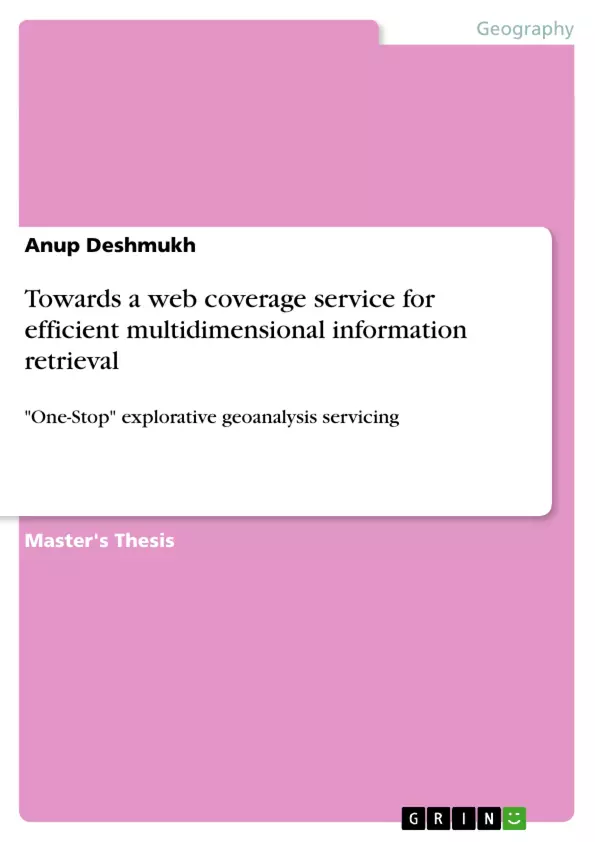1. INTRODUCTION
Many organizations face the challenge of managing and presenting the sheer quantity of data being captured on a monthly, weekly, daily and hourly level. The introduction of business intelligence (BI) applications and technologies has helped organizations gather, provide access to, analyze, and present data and information easily to the decision makers. The applications utilize both relational and multidimensional technologies to form the overall BI infrastructure. From a historical perspective BI is a popularized umbrella term introduced by Howard Dresner of the Gartner Group in 1989 to describe a set of concepts and methods to improve business decision making by using fact-based support systems. BI is a broad category of applications and technologies for gathering, storing, analyzing, and providing access to data to help enterprise users make better business decisions. BI solutions include the activities of decision support systems, query and reporting, online analytical processing (OLAP), statistical analysis, forecasting and data mining. Microsoft defines BI as: THE PROCESS OF EXTRACTING DATA FROM A DATABASE AND THEN ANALYZING THAT DATA FOR INFORMATION THAT YOU CAN USE TO MAKE INFORMED BSINESS DECISIONS AND TAKE ACTION. However, data is not always used to its full potential and part of its richness, the spatial component, is simply left out. It has been estimated that about 80% of the data stored in corporate databases integrates spatial information that can be characterized by position, shape, orientation or size (Frankin, April 1992). It is obvious that this meaningful data is worth being integrated in the decision making process to provide a complete operational picture.
To gain better advantage of the spatial dimension in decision making the appropriate tools must be used. Geographic Information Systems (GIS) are the obvious potential candidate for such a task. (Worboys, 1995) provide this typical definition of a conventional GIS: A GIS IS A COMPUTERBASED INFORMATION SYSTEM THAT ENABLES CAPTURE, MODELING, MANIPULATION, RETRIEVAL, AND PRESENTATION OF GEOGRAPHICALLY REFERENCED DATA. GIS provides functionalities like
Inhaltsverzeichnis (Table of Contents)
- Introduction
- Geographic Business Intelligence (GBIS)
- Business Intelligence (BI)
- Geographic Information Systems (GIS)
- GBIS as the synergic power
- Spatial Online Analytical Processing (SOLAP)
- The prototype solution
- The Open Geospatial Consortium (OGC)
- Web Coverage Service (WCS)
- OnLine Analytical Processing (OLAP)
- Implementation
- The WCS-OLAP integration
- The DPA dataset
- Evaluation
- Conclusion
- References
Zielsetzung und Themenschwerpunkte (Objectives and Key Themes)
This master thesis investigates the integration of Business Intelligence (BI) and Geographic Information Systems (GIS) to develop a comprehensive and efficient geographic business intelligence solution (GBIS). The aim is to create a prototypical solution for Spatial Online Analytical Processing (SOLAP) that leverages the strengths of both technologies. This research explores the potential of combining web coverage services (WCS) with an OLAP server to enable effective multidimensional information retrieval.
- The convergence of Business Intelligence (BI) and Geographic Information Systems (GIS)
- Exploring the concept of Spatial Online Analytical Processing (SOLAP)
- Developing an interoperable web-based prototype solution for SOLAP
- Integrating the Web Coverage Service (WCS) and an OLAP server
- Evaluating the performance and effectiveness of the integrated solution.
Zusammenfassung der Kapitel (Chapter Summaries)
- Introduction: This chapter introduces the research topic and its relevance in the context of integrating Business Intelligence (BI) and Geographic Information Systems (GIS) for efficient information retrieval.
- Geographic Business Intelligence (GBIS): This chapter explores the concepts of Business Intelligence (BI), Geographic Information Systems (GIS), and their integration into a comprehensive GBIS solution. It highlights the benefits of integrating these two technologies for improved decision-making and operational efficiency.
- Spatial Online Analytical Processing (SOLAP): This chapter delves into the emerging field of Spatial Online Analytical Processing (SOLAP), a specialized branch of spatial decision-making solutions that combines spatial and analytical processing capabilities. The chapter discusses the potential and challenges of developing effective SOLAP solutions.
- The prototype solution: This chapter presents the proposed prototype solution, which integrates a Web Coverage Service (WCS) with an OLAP server to create a comprehensive and interoperable platform for multidimensional information retrieval. The chapter describes the key components of the solution and their roles in facilitating data analysis and visualization.
- Implementation: This chapter outlines the practical implementation of the prototype solution, including the integration of the WCS and OLAP server, the use of the Deutsche Presse Agentur (dpa) dataset for testing, and the development of specific scenarios for evaluating the solution's effectiveness.
- Evaluation: This chapter presents the evaluation results of the prototype solution based on the scenarios developed using the dpa dataset. The evaluation assesses the performance, usability, and effectiveness of the integrated solution in retrieving and analyzing multidimensional geospatial information.
Schlüsselwörter (Keywords)
This research focuses on the intersection of Business Intelligence (BI) and Geographic Information Systems (GIS) to develop an integrated solution for Spatial Online Analytical Processing (SOLAP). Key concepts include Web Coverage Services (WCS), OnLine Analytical Processing (OLAP), the Open Geospatial Consortium (OGC), and the Geography Mark-up Language (GML). The study uses the Deutsche Presse Agentur (DPA) dataset for testing and evaluation, highlighting the practical application of these technologies in a real-world context.
- Quote paper
- Anup Deshmukh (Author), 2007, Towards a web coverage service for efficient multidimensional information retrieval, Munich, GRIN Verlag, https://www.grin.com/document/87634



